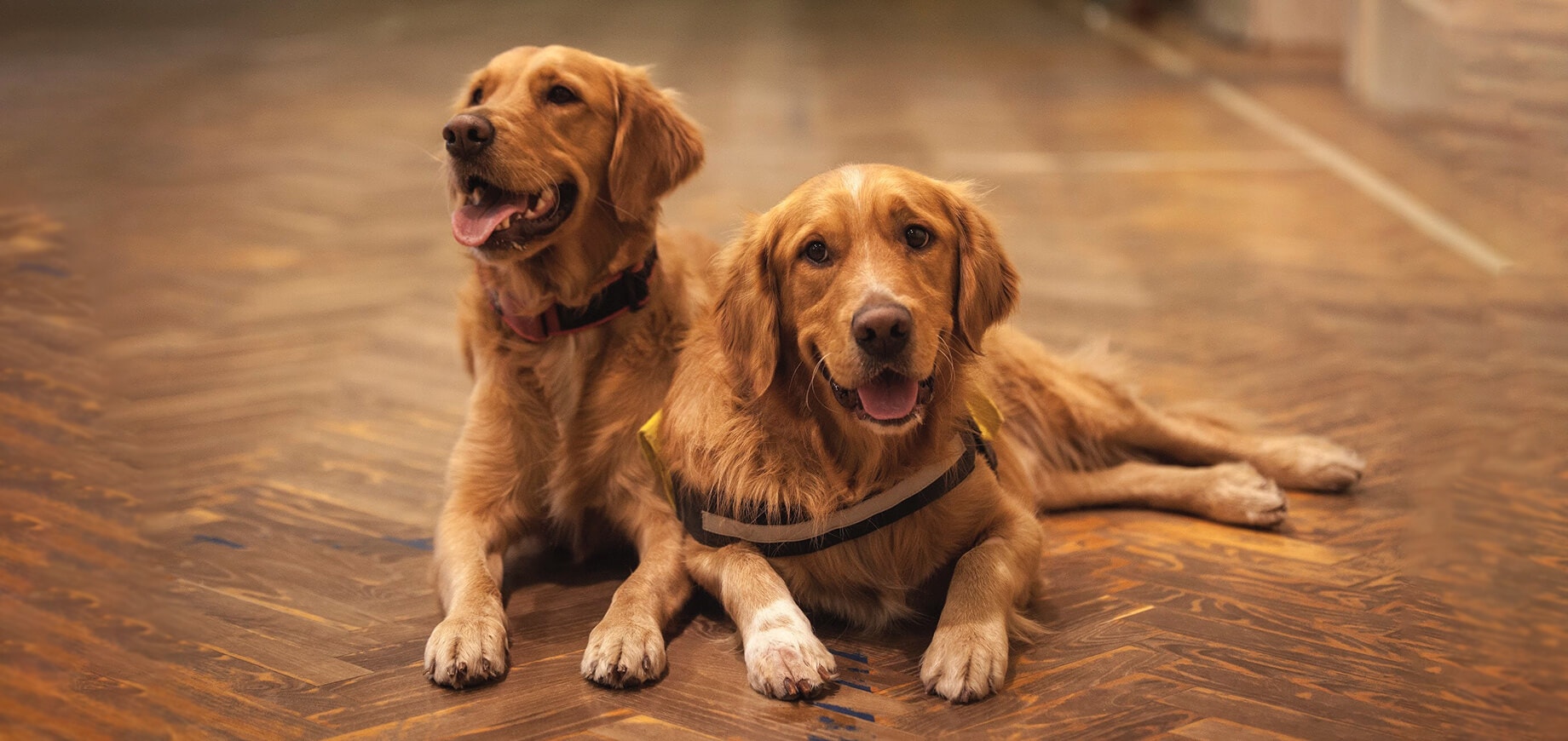

In an ideal world we’d hang out with our furry friends all day long, right? But real life will get in the way and there will be times when you have to leave your puppy or dog alone, whether that’s to take the kids to school or go to work. You may even have found that after a period of working from home with your dog by your side, you’re now required to be in the workplace more regularly - meaning they have to be left alone more.
The good news is, although dogs are social animals who prefer being with their ‘pack’ (that’s you!), if you get them used to being left from the start and you don’t leave them for periods that are too long, there’s no reason why they shouldn’t be happy and comfortable being home alone.
Here we take a look at how long you can leave a dog alone, how this varies according to your dog’s age and simple tips that will make life easier on everyone.
There’s a huge difference in how long you can leave a young puppy and how long you can leave a fully-grown dog. Apart from anything else, puppies don’t have big enough bladders to go for long without a toilet break. For the same reason, if you’ve got a senior dog, you might not be able to leave them for as long as you used to.
Here’s a guide to how long you can expect to leave dogs of all ages. Do remember that ‘guide’ is the key word though. Each dog is a unique individual.
Puppies under ten weeks old | 1 hour maximum |
Puppies aged between 10 -12 weeks | 2 hours maximum |
Puppies aged 3 months | 3 hours maximum |
Puppies aged 4 months | 4 hours maximum |
Puppies aged 5 months | 5 hours maximum |
Puppies over 6 months and adult dogs | 6 hours maximum |
When it comes to how long you can leave a dog alone, there are other things to factor in as well as their age.
Before leaving your furry friend, give them a chance to go to the toilet. You also need to ensure you’re not away for longer than their bladders can wait! If you’ve got a puppy and are yet to embark on toilet training, it’s best not to leave them alone for very long at all.
No matter how chilled your dog is about being left alone, they’re not going to be pleased if you miss their dinner time! Feed them before you leave or put out food in an automatic pet feeder that opens at a pre-set time. You can, of course, just leave out food in a normal bowl or some kibble inside a kong toy, although it’s worth mentioning most dogs probably won’t wait until dinnertime to wolf it down! If you are leaving out food for more than a couple of hours, use dry food not wet as it won’t spoil.
From starting slowly to banishing boredom, there are lots of ways you can help your dog to be happier about being left on their own:
It’s important you understand what you can reasonably expect of your dog or puppy in terms of how long they can be left. Check out our guide above.
As soon as your furry friend has settled into your family, start getting them used to the idea that sometimes you need to leave them alone. It stands to reason that a dog who has learnt this early on will be more comfortable with the idea than one who hasn’t.
When you’re in the process of training a pooch to be left alone, it’s important to adopt a gradual approach. Start by just leaving the room and staying in the house and build up the time you take to return.
Before leaving a dog alone, it’s important to make sure they’ve had plenty of exercise and the opportunity to go to the toilet.
Lots of dogs feel happier about being left if they’re cosy in their crate. Check out our tips on crate training.
If you don’t use a crate, you might want to think about restricting your dog’s “access all areas” pass to your home. Some pooches feel more secure in a confined area. It also limits the damage to your home if they love to chew!
To prevent your furry friend from getting bored when they’re left alone, you might want to leave them with KONGs, treat balls or a puzzle feeder.
If you have a dog who gets anxious when you’re not around, you could try using a calming dog collar (these emit a drug-free scent designed to mimic a mother dog’s pheromones) or a calming, self-warming dog bed. Some dogs might also find a white noise machine or the radio left on at a low volume soothing.
If you’re training your dog to be left alone, it can be very useful to be able to observe how they behave when you’re not around. So if your budget will stretch to it, why not invest in a pet camera?
With dogs (and for that matter humans!) rewarded behaviour gets repeated. When your dog has been left alone and been good, be sure to show your appreciation by giving them lots of calm praise. You also might want to give them a treat. The PEDIGREE™ Tasty Mini range are low in fat and contain Omega 3, Vitamin E and calcium. There are three great flavours: Beef & Cheese, Beef & Poultry and Chicken & Duck.
If you do get home after leaving your dog alone and find they’ve been barking their heads off the whole time or chewed your favourite slippers, it’s vital you don’t punish them. Your dog has no understanding of the fact they have been ‘naughty’. Furthermore, they don’t get the concept of punishment, so it isn’t effective.
Some dogs adapt more quickly to spending periods of time alone while others will experience separation anxiety. Here are some of the signs your furry friend might be in the latter camp:
To deal with separation anxiety, the first thing you need to do is understand it. Is it being triggered by fear or by boredom? Is your dog not getting enough mental or physical stimulation?
Once you understand what is causing your dog’s distress you can use the advice offered here to deal with the problem. Be patient and show your dog lots of love and understanding.
If you need to leave your dog when you go to work, you can either ask a willing family member to step in, employ a professional pet sitter or dog walker to check on them and take them for a walk during the day, or take your furry friend to doggy daycare.
Most experts agree that eight hours is too long for a dog to be left alone, regardless of their age. For an adult dog, six hours is about the maximum when it comes to being left alone. This is something to be built up to gradually.
You should never leave a dog alone for three days. If you’re going to be away from home for a night, you need to get someone to look after your dog. How long you can leave a dog depends on their age but think in terms of hours not days.
Now we’ve looked into how long you can leave a dog alone and tips to make the whole process easier, why not find out more about how to care for your dog.

